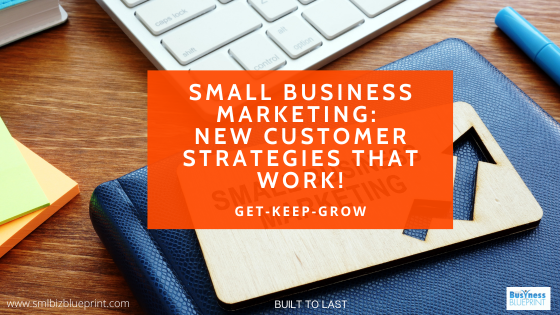As a business owner, your goal is not just to sustain your business but to grow it.
This in-depth guide will walk you through effective marketing strategies for reaching and engaging new customers.
Strategic Market Positioning for Maximum Visibility
Positioning your business strategically in the market is the first step towards attracting new customers.
This means understanding and leveraging your unique selling proposition (USP).
For instance, if you operate an eco-friendly clothing line, highlight your sustainable practices and ethical sourcing in all marketing materials. This differentiation helps you stand out in a crowded market, attracting customers who share similar values.
Actions
Identify Your Unique Selling Proposition (USP):
Determine what sets your business apart from competitors and emphasize this in all your marketing materials.
Conduct Competitor Analysis:
Regularly review your competitors’ strategies to ensure your positioning remains unique and appealing.
Communicate Your Brand Story:
Develop and share a compelling narrative about your brand’s origins, mission, and values to connect emotionally with customers.

Developing a Referral Program to Leverage Existing Customer Networks
A well-structured referral program can turn your existing customer base into a powerful marketing tool.
The key is to offer incentives that are both enticing for the referrer and beneficial for the new customer.
For example, providing both parties with a discount or a free product can create a win-win situation. This brings in new customers and enhances loyalty among your current base.
Actions
Offer Attractive Incentives:
Create compelling incentives for the referrer and referee, such as discounts, free products, or exclusive access.
Make Referring Easy:
Implement a simple, user-friendly process for customers to refer friends and family.
Promote Your Referral Program:
Regularly remind customers of the program through email, social media, and in-person interactions.
Implementing Targeted Advertising Campaigns
Targeted advertising is about delivering the right message to the right people at the right time.
Utilise customer data to understand demographics, interests, and buying behaviours.
For instance, if your target audience is young professionals, consider placing ads on LinkedIn or during podcasts that cater to career development.
The more precise your targeting, the higher the likelihood of attracting customers who are genuinely interested in what you offer.
Actions
Define Your Target Audience:
Identify who you want to reach based on demographics, interests, and buying habits.
Choose the Right Platforms:
Select advertising platforms where your target audience is most active.
Use A/B Testing:
Test different ad formats and messages to see which performs best with your audience.
Hosting or Participating in Events and Webinars
Events and webinars are not just about showcasing your products or services; they’re opportunities to engage directly with potential customers.
When hosting a webinar, for example, focus on providing valuable information related to your industry rather than just promoting your business.
This approach establishes your credibility and can pique attendees’ interest in your services.
Actions
Choose Relevant Topics:
Focus on subjects that are both interesting to your target audience and showcase your expertise.
Promote Effectively:
Use email marketing, social media, and partnerships to spread the word about your event or webinar.
Engage with Attendees:
Encourage interaction during the event and follow up with participants afterwards.

Building Strategic Partnerships for Cross-Promotion
Strategic partnerships should be symbiotic, offering mutual benefits to both businesses involved.
Identify non-competitive businesses in your industry or related fields and propose collaborations to offer value to both customer bases.
For instance, if you run a yoga studio, partnering with a local health food café for joint promotions can expose your business to a wider audience interested in wellness.
Actions
Identify Complementary Businesses:
Look for businesses that offer products or services that complement yours without directly competing.
Develop Joint Marketing Plans:
Plan promotions, events, or content that benefit both parties.
Measure and Adapt:
Regularly assess the partnership’s effectiveness and make adjustments as needed.
Utilising Influencer Marketing to Reach Broader Audiences
Influencer marketing extends your reach to the influencer’s audience, which can be a goldmine of potential customers.
The key is authenticity – choose influencers whose content aligns with your brand values.
A small-scale influencer with a highly engaged audience can be more effective than a celebrity with a larger but less engaged following.
Actions
Choose Influencers Aligned with Your Brand:
Select influencers whose style, values, and audience align with your brand.
Set Clear Goals and Expectations:
Define what you aim to achieve and communicate this clearly with the influencer.
Track and Analyze Results:
Use metrics like engagement rate and conversion to assess the campaign’s effectiveness.
Engaging in Community Outreach and Social Responsibility Initiatives
Participating in community projects or supporting social causes can significantly enhance your brand’s reputation and visibility.
For example, a local bookstore hosting free literacy classes for kids contributes to the community and builds a positive brand image that can attract new customers who value community involvement.
Actions
Select Causes Aligned with Your Brand:
Choose community projects or causes that resonate with your brand’s values.
Involve Your Customers:
Encourage customer participation in these initiatives, enhancing community engagement.
Share Your Efforts:
Use your website and social media to share stories and updates about your community involvement.
Optimising Online Presence for Search Engines
SEO is crucial for online visibility. It’s about more than just sprinkling keywords throughout your website; it’s about creating relevant, high-quality content that addresses the needs and questions of your target audience.
Regularly updating your blog with useful information, optimising website speed, and ensuring mobile-friendliness are key components of a strong SEO strategy.
Actions
Perform Keyword Research:
Identify and incorporate relevant keywords into your website content.
Optimise Website Speed and Mobile Responsiveness:
Ensure your website loads quickly and is easily navigable on mobile devices.
Create Quality Content:
Regularly publish informative and engaging content that addresses your audience’s interests and questions.

Creating Compelling Offers and Promotions
Effective offers and promotions are those that provide real value to new customers.
For example, a ‘buy one, get one free’ offer or a significant discount on the first purchase can be enticing. These promotions should be time-limited to create a sense of urgency.
Actions
Design Time-Limited Offers:
Create urgency with offers that are available for a limited time.
Segment Your Audience for Personalized Promotions:
Tailor your offers based on customer preferences and purchase history.
Promote Widely:
Utilise multiple channels like email, social media, and in-store signage to promote your offers.
Leveraging Customer Testimonials and Case Studies
Testimonials and case studies are powerful because they provide social proof from a third-party perspective.
They should highlight specific benefits customers have experienced and address potential objections that new customers might have.
Video testimonials or detailed case studies on your website can be particularly effective in building trust and credibility.
Actions
Gather Diverse Testimonials:
Collect testimonials from a variety of customers to appeal to a broader audience.
Create Compelling Case Studies:
Develop in-depth case studies that detail customer challenges and how your product or service provided a solution.
Showcase Testimonials and Case Studies:
Feature these on your website, marketing materials, and social media.
Must Haves
Strategic Market Positioning for Maximum Visibility:
This is crucial as it determines how your business is perceived in the market. A well-defined Unique Selling Proposition (USP) helps differentiate your brand from competitors, making it more attractive to your target audience.
Implementing Targeted Advertising Campaigns:
Targeted advertising is essential because it ensures that your marketing efforts are focused on the segment of the population most likely to be interested in your products or services. By using data-driven insights to direct your ads, you can increase the efficiency of your marketing spend and improve overall conversion rates.
Optimising Online Presence for Search Engines:
In today’s digital age, having a strong online presence is non-negotiable. Effective Search Engine Optimization (SEO) increases your visibility to potential customers searching for products or services like yours. A well-optimized website attracts more traffic and enhances user experience, increasing engagement and conversion rates.
Additional Options
Leveraging Interactive Content:
Interactive content such as quizzes, polls, and infographics can significantly boost customer engagement. This content provides value and encourages users to participate actively, leading to increased time spent on your site and better engagement metrics. For instance, a fashion retailer might use an interactive quiz to help customers find their personal style, which engages the customer and provides valuable data for personalised marketing.
Utilising Gamification Techniques:
Gamification, applying game-design elements in non-game contexts, can be a powerful tool to drive customer engagement and loyalty. This could include implementing a points and rewards system for frequent purchases or customer referrals. For example, a coffee shop could create a mobile app that allows customers to earn points for every purchase, which can then be redeemed for free coffee or other perks.
Implementing Voice Search Optimization:
With the increasing use of digital assistants like Alexa and Google Assistant, optimising for voice search is becoming more important. This involves using natural language phrases and question-based queries in your SEO strategy. For instance, a local restaurant might optimise voice search by including phrases like “best pizza place near me” or “Italian restaurant open now” to capture the voice search queries of potential customers.
Conclusion:
In conclusion, these strategies are designed to provide you with a comprehensive approach to attracting and engaging new customers.
By implementing these tactics, you are not just reaching out to potential customers but are building lasting relationships that can propel your business forward.
FAQs
Q1 How does strategic market positioning attract new customers?
A1 It highlights your unique offerings, making your business appealing to specific customer segments.
Q2 What makes referral programs effective?
A2 They leverage existing customers’ trust in your brand, encouraging word-of-mouth promotion.
Q3 Why are targeted advertising campaigns important?
A3 They ensure that your marketing efforts reach the people most likely to be interested in your products or services.
Q4 How do events and webinars contribute to customer engagement?
A4 They provide a platform for direct interaction with potential customers, showcasing your expertise.
Q5 What are the benefits of strategic partnerships?
A5 They allow you to tap into complementary customer bases, increasing your market reach.
Q6 How does SEO help in attracting new customers?
A6 It increases your online visibility, making it easier for potential customers to find you when they search for related products or services.
Q7 Why are customer testimonials and case studies powerful?
A7 They provide social proof, building trust and credibility with potential customers.




